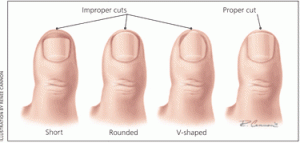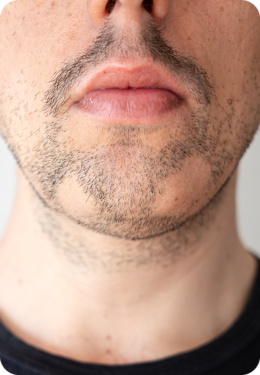Specialists
Ingrown toenails
Surgical Procedures
Ingrown toenails occur when the nail begins to grow into the skin instead of over it, and most commonly affect the big toe (or the hallux).
It can be extremely painful, making it difficult to walk or run comfortably, and if left untreated can become infected and grow in intensity. Whilst for most people it’s a severe inconvenience, for people with diabetes or poor sensation or circulation, it can become a severe limb-threatening issue.

How do you get ingrown toenails?
It’s more common in people with thick or curved nails, although anyone can get them.
Often the culprits are tight-fitting shoes that force the nail into a curved shape or cut the nails too short, so the sharp edge catches the skin and then continues to grow into it.
As the nail grows, the skin becomes damaged and irritated.
This causes an inflammatory reaction (redness, swelling, pus and heat) which is painful.
Unfortunately, the inflammatory reaction doesn’t fix anything, and unless the nail is lifted above the skin it will continue to get worse.
Sometimes the area of inflammation becomes infected, and that’s usually when someone is prompted to come to see the doctor.
What can I do if I have an ingrown toenail?
Conservative therapy
If the ingrown toenail is mild, then clipping the nail that’s grown into the skin, and clipping the thickened dead skin can be all that’s needed.
First, you place your foot in a bath of Epsom salts and warm water for 20 minutes.
After each soak you can apply a steroid cream to reduce the localised swelling – your doctor will advise if this is necessary.
After a few days, things should improve.
During this time, placing small wisps of cotton under the ingrown nail edge helps to elevate it and prevent it from digging in again. If it falls out just replace it.
Dental floss can also be used.
A small plastic strip of tubing from an IV cannula can be used too, depending on if the toe has enough room to fit this.

If there’s a sign of infection, antibiotics might be needed along with these treatments.
Surgical therapy
If you are getting recurring ingrown toenails, or the pain is quite significant and it looks like we’ll be unable to lift the nail, surgery might be required to correct it.
The most common procedure is called a toenail wedge resection.

This might be a partial or complete surgical matrixectomy.
In this procedure, we cut the corner of the offending toenail down to the matrix where the nail grows, and use a chemical called phenol to stop the nail from regrowing in that area.
Following the procedure, you are advised to keep the wound and dressings dry and return for review in the next few days.
After a week the dressings are removed, and you can generally return to all your activities.
With a partial matrixectomy there is a higher chance of nail regrowth occurring, so a repeat procedure might be done if you develop further episodes of ingrown toenails.
If you would like to book in for advice and review of your ingrown toenails, book in to see any of the doctors at GS Health. We would have to examine the nail to see if it requires surgery.























